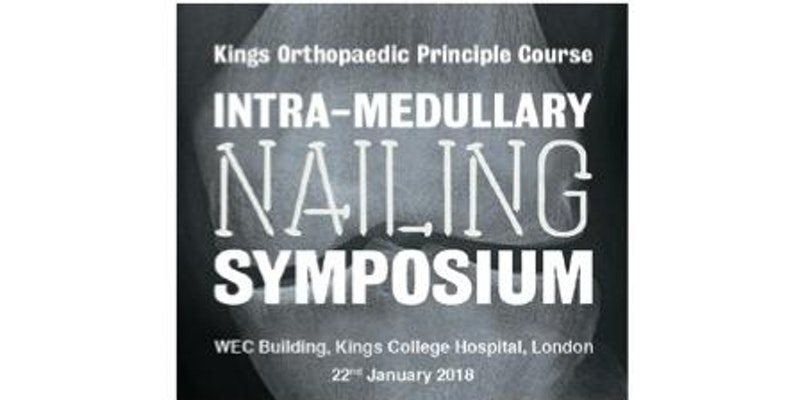
- This event has passed.
King’s Intramedullary Nailing Symposium
22/01/2018
£95 – £115
DESCRIPTION
Welcome to the Kings IM Nailing Symposia… We provide a collaborative approach in teaching the principles, & basic science of intramedullary nailing and have established a faculty of consultant grade surgeons experienced at providing trauma care.
During this course we will guide the delegates and demonstrate the techniques of IM nailing and common pitfalls through:
– Lectures illustrating long bone fixation and nailing techniques in multiple locations.
– There will be an emphasis key decision-making and alternative operative treatment options and what is now becoming the gold standard.
– Modern concepts, pearls of wisdom and tips and tricks, techniques and the basic principles will be described and reinforced.
– Our faculty will illustrate the management of difficult clinical scenarios including proximal tibial fractures and supra- patella nailing and introduce the concepts of our simulation systems.
– Break out sessions in a specialised dry lab worshop have been orgainised and will be led by consultant faculty thus allowing practical hands on experience for delegates with the experts.
Our History… King’s College Hospital is a Major Trauma Centre and also runs one of the largest Diabetic Foot Units in the UK. The unit provides tertiary referral service for complex diabetic foot deformity and lower limb reconstructive procedures including surgical deformity correction. This is accompanied by a history of teaching and training and has run both an FRCS course and specific hand, and trauma courses.
Mr. Rajat Varma, is a Senior Orthopaeduc Tauma Consultant at Kings College Hospital and previous trauma lead. He has a passion for IM Nailing and is an international speaker in this area having lectured as AO Faculty. He has been developing the symposia ideology since 2001. His colleague Mr. Raju Ahluwalia has a specialist interest in MTC Trauma and with the other members of the Kings Orthopaedic Research & Education team believe in demonstrating and developing surgical acumen for the next generation.
Meeting Program Synopsis Session
Session 1:
Basic Science –
8.50 Key Concepts Fracture Healing Response in Relation to Choice of Implant
9.05 Clinical Biomechanics in Relation to Nailing & Reaming
Session 2: Proximal Femoral Fractures
9.20 The Role of DHS / Fixed Angle Plate in Proximal Femoral Fractures
Understanding how a DHS behaves differently in A2 (medial wall comminution) & A3 (lateral wall instability) fractures. Role of proximal femoral plates.
9.35 The Role of the Nail in the Proximal Femur
Understanding different proximal femoral fractures A1 (stable) / A2 (medial wall comminution) &A3 (lateral wall fracture) in relation to preserving femoral neck length, risk of mal-alignment and propensity for delayed union.
9.55 Femoral Neck & Shaft Fracture
Antegrade nail vs. DHS & retrograde nail
10.10 How to salvage the failed nail.
Understanding why the nails fail in proximal femur fractures and how to salvage the situation
10.30 Tea & Coffee
Session 3: Distal Femoral Fractures Distal Femoral Fracture –
10.50 Plating Option
Understanding distal femoral fractures in relation to soft tissue injury, involvement of articular surface, risk of mal-alignment and propensity for delayed union.
11.05 Rationale for the IM Femoral Nail – Retrograde Nail
Can one nail distal femoral fractures with a nail technically and safely? Advice on when to go antegrade or retrograde, emphasizing the pro’s & con’s of antegrade femoral nailing retrograde femoral nailing for managementof distal femoral fractures.
11.20 How Do I Nail Distal Femoral Fractures – Antegrade Nail
Step-by-step technique in nailing distal femoral fracture with antegrade nailing techniques.
11.40 How Do I Sort Out the Complications.
Principles of treating non-unions of distal femoral fractures
12-13.00 Break Out Session in Dry Laboratory + Lunch
a) Management of intra-medullary infection
b) Supra patella Nailing Technique
c) Nailing Techniques in Distal Tibial Fracture
d) Proximal Femoral Nail Augmentation in Osteoporotic Fractures
Session 4: Proximal Tibial Fractures Proximal Tibial Fracture –
13.00 Proximal Tibial Fracture- ORIF Option
Understanding proximal tibia fractures in relation to soft tissue injury, involvement of tibial plateau, risk of mal-alignment and propensity for delayed union.
13.15 The Advantages of Nailing
Rationale – Why nail proximal tibial fractures in preference over plating or ring fixator.?
How Did This Complication Happen – How to Sort it Now? 13.30
How to correct mal-alignment seen on immediate post op x-ray – What is acceptable and what is not and what to do next?
Session 5: Distal Tibial Fractures: Distal Tibial Fractures –
Distal Tibial Fractures -Locked Plate 13.45
Understanding distal tibia fractures in relation to soft tissue implications, level of fibular fracture, risk of mal-alignment and propensity for delayed union – safe technique of locked plating.
14.00 Indications and Technique – Nailing Option
Rationale – Why nail distal tibial fractures in preference over locked plating or ring fixator? How low can one nail distal tibial fractures nail technically and safely? Can and should nailing be used to treat plafond fracture?
14.15 Role of Ring Fixator in Distal Tibial Fractures
When soft tissues are not optimal – fixator is the answer.
14.30 The Hind Foot Nail Uses and Indications
Role of hind-foot nail in distal tibial fractures in elderly and diabetes.
14.45 Role of Fibular Fixation – Nail / Plate in Distal Tibial Fractures
15.00 Tea & Coffee
15.15 -45 Break Out Session in Dry Laboratory
a) Management of intra-medullary infection
b) Supra patella Nailing Technique
c) Nailing Techniques in Distal Tibial Fracture
d) Proximal Femoral Nail Augmentation in Osteoporotic Fractures
Session 6: Humeral Shaft Fractures
15.45 The Anatomy of the Humeral Nail, Indications, Literature Review
Understanding humeral fractures in relation to rotator cuff damage, risk of mal-alignment and propensity for delayed union. Why nail humeral fractures in preference over locked plating or DCP?
16.00 How Do I Do it?
How high can one-nail proximal humeral fractures nail technically and safely? How can one nail humeral fractures technically and safely? Step-by-step technique in nailing humeral fracture.
16.20-17.00 Case Discussions & Questions
17.00 Round up
17.35 Close Of Course/Feedback
Details
- Date:
- 22/01/2018
- Cost:
- £95 – £115
- Event Category:
- Trauma
- Website:
- https://www.eventbrite.co.uk/e/kings-intramedullary-nailing-symposium-tickets-38855483798?aff=erelexpmlt
Organiser
- Kings Orthopaedic Research & Education (KORE)
Venue
- Kings College Hospital
